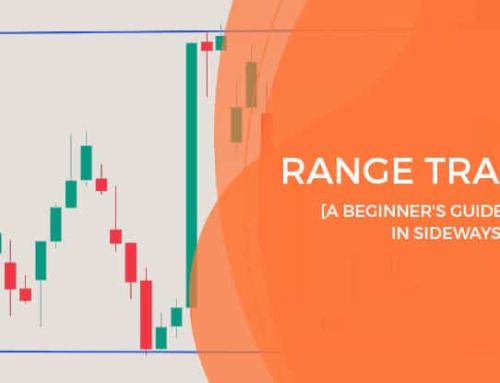Robot trading, or automated trading systems (ATS) automate trading based on market conditions. They can make the same decisions as a human trader but are able to do so automatically. They can do this via a third-party trading platform, using a range of algorithmic trading types.
What is Robot Trading?
Robot trading is the use of computer algorithms that make trading decisions. You provide the algorithm with certain parameters, and it then makes buy or sell decisions for you, automatically.
Automated trading robots are a piece of software that can connect to a financial market. They simulate human trading using trading patterns (without the emotions). More sophisticated robots are able to also manage trades based on market conditions.
How Does Robotic Trading Work?
There are different ways that robot trading can work. In some cases, the robot will follow the signals provided by a human. In other cases, the robot will be fully autonomous, making all its own trading decisions.
Robot trading uses human trading strategies, so the strategy needs to be simple. The program needs a strategy simple enough to brake down into a series of rules it can understand. The more complex a strategy, the harder it will be to program.
A programmer will provide rules based on existing trading indicators and market conditions. Some common indicators may include, moving averages, relative strength indicators etc. When these indicators reach certain levels the program will execute a given task e.g. buy a stock.
Along with fully automated trading robots, there are also semi-automated trading robots. These programs don’t make any executions, instead they send an alert to the trader to act on that alert.
Do Automated Trading Robots Actually Work?
Whether automated trading robots work is hard to say, there are a lot of factors. First, the programmer needs to base the signals on a successful trading strategy.
The robot is as good as its programmer, their own trading skills, and the back-testing of the trading robot. Software is prone to bugs, constant testing is important to maintain the integrity of the system.
While a bot might be a useful tool, it lacks the 3 dimensional thinking of a human. The program can only perform tasks it’s given, and follow those rules.
A semi-automated signal combined with human interpretations can be a more robust system. For this to work you will need to learn to trade. There’s not much benefit for trading bots when compared to trading using indicators.
Something to consider is that the rules input into a program are rigid. How well will this strategy work in different market conditions?
Robotic trading is not a set and forget money printing machine. Market conditions change, unexpected events occur, which need the intervention of the trader. So you’re going to need to know how to trade if this does happen.
You will also need to know about risk management in intraday trading, or day trading. If something goes wrong, you will need to know how to manage the risk you’ve now assumed.
Also note; trading robots require a lot of user input. This means that the user needs to know what they are doing to at least some degree. The bot is built to automate repetitive tasks for the trader.
Most trading robots work, in the sense that they carry out trades; but, they’re not perfect and can’t guarantee long-term profits.
When it comes to these robots I tend to side with the authorities. Automated trading robots to be unreliable novelties at best, and scams at worst.
Robot Trading: Back-testing
Back-testing is where the programmer (or you) uses historical data to test the strategy. The bot uses a real market environment, either live or replayed.
There is no doubt that back-testing is an important part of any trading strategy. When it comes to trading robots it’s even more important. This is because decision making is automatic and strict orders are being followed. If there is an error somewhere in the program, the robot has no way of knowing that it exists.
If you’re choosing to use a trading robot, be sure you thoroughly test it to ensure it works as it should.
Advantages of Automated Trading Robots
1. Reduced time needed to trade
An automated trading robot can perform repetitive tasks, so there is less time doing these tasks yourself.
2. Reduced emotional stress during trading
What makes you vulnerable in trading is your emotion. Emotions cause you to make decisions that don’t fit your plan. Automated trading can can remove emotion and trading without fear becomes easier.
3. Preserves discipline
The automated trading software follows strict rules that it’s provided. It will execute exactly to those rules. This means that your strategy is followed exactly.
4. Not influenced by human error
Accidentally clicking the wrong button, or bumping a key can cause errors in your trading. Momentary lapses in concentration can also produce human errors. A robot will not have this issue.
5. Faster than a human trader
Trading software can execute within a split second, humans take a little longer. If you’re looking for the perfect entry, speed can sometimes be important.
6. Back-testing is easier
Once you automate a strategy, it can be easily tested in different market conditions (using current or past price data).
Disadvantages of Automated Trading Robots
1. They’re not always profitable
They might work in the short-term, but long-term consistency is difficult. There’s a reason that companies sell robots rather than as proprietary software that pretty much prints money.
2. Still requires time
You are still required to put in the effort to maintain and monitor the bot. If you are the one creating and testing, it will take a long time, and a lot of effort.
3. Require intervention at times
Although a lot of tasks can be automated, there will always be times where you need to intervene. You may need to alter settings based on conditions.
4. Expensive
Creating a bot takes a long time, a lot of skill, and a lot of effort. For these reasons, bot creators aren’t going to let you have their product for cheap.
5. Many are scams
It’s sad to say, but there is a real market for people who want to make money without putting in the effort. Scammers love to target these people, and a trading robot fills the need.
Is Robotic Trading Legal?
Robot trading is legal. This comes with a caveat, not all countries allow robot trading. Some brokers frown on robot trading.
Another issue with robot trading is that there is little to no regulation. This means that companies providing automated trading robots have little recourse. There is a lot of trust to be put into robotic trading and with good reason, there are many scams across the internet.
Although taking the thinking out of your trading through robot trading sounds like a good idea, it may be better to learn to trade for yourself.
Bottom Line
Appealing for a variety of reasons, automated trading systems shouldn’t be a substitute for a human trading strategy. You’ll also need to have some amount of knowledge to use an automated trading robot, why not learn to trade and do it for yourself.
Robotic trading also needs time. This is now a set and forget piece of software. You have to routinely check it. You may also need to intervene when random events occur or market conditions change. A robot won’t be able to disregard a random spike in the way that a human can.
Would I personally use a trading robot? No, I’m confident in my own trading strategy and enjoy having complete control over trading decisions. For me, learning how to trade is better than to put your trust in automated trading software.
If you’re interested in learning how to trade, you should consider taking an online trading course such as the ones we teach.
![Robot Trading [Does Automated Trading Work] 2 robot trading - does automated trading work](https://idta.com.au/wp-content/uploads/2022/03/robot-trading-does-automated-trading-work.jpg)
![Robot Trading [Does Automated Trading Work] 6 Free day trading web class](https://idta.com.au/wp-content/uploads/2020/08/free-day-trading-web-class.png)


